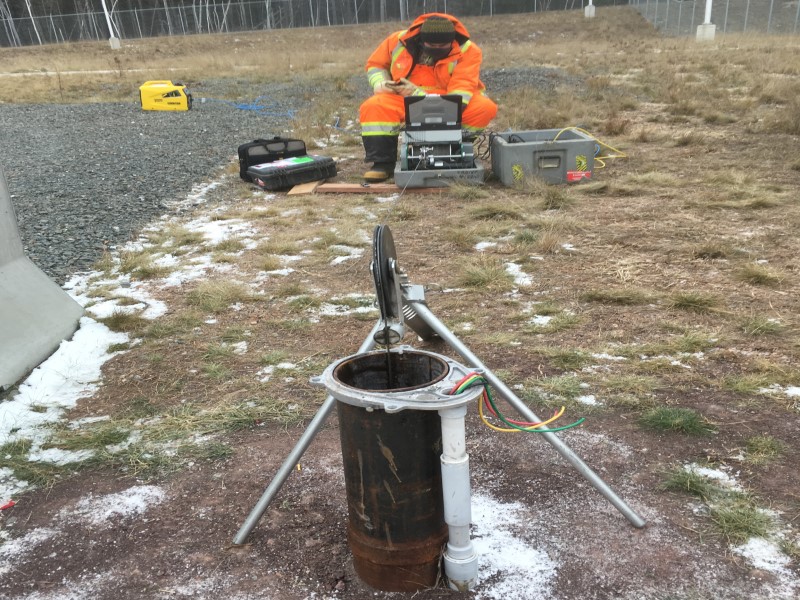Downhole Geophysical Surveys
A downhole seismic survey is conducted by measuring the time for seismic waves generated by an impulsive source at the surface to travel to a sensor located at a sequence of depths in the borehole. Two orthogonal horizontal geophones are used to detect shear-wave (S-wave) arrivals and a vertical geophone is used to detect compression-wave (P-wave) arrivals.
At each measurement level, a sensor assembly is locked to the borehole wall using a clamping mechanism so that the geophones will couple with the seismic signals propagating in the earth. Using the data from these measurements seismic velocity profiles can be made to aid in engineering efforts to further understand geologic parameters.
Additional data collection methods such as caliper, gamma, resistivity, and acoustic televiewer provide information on the borehole hydrostratigraphy to aid in delineating stratigraphy, thickness, and permeable zones.



